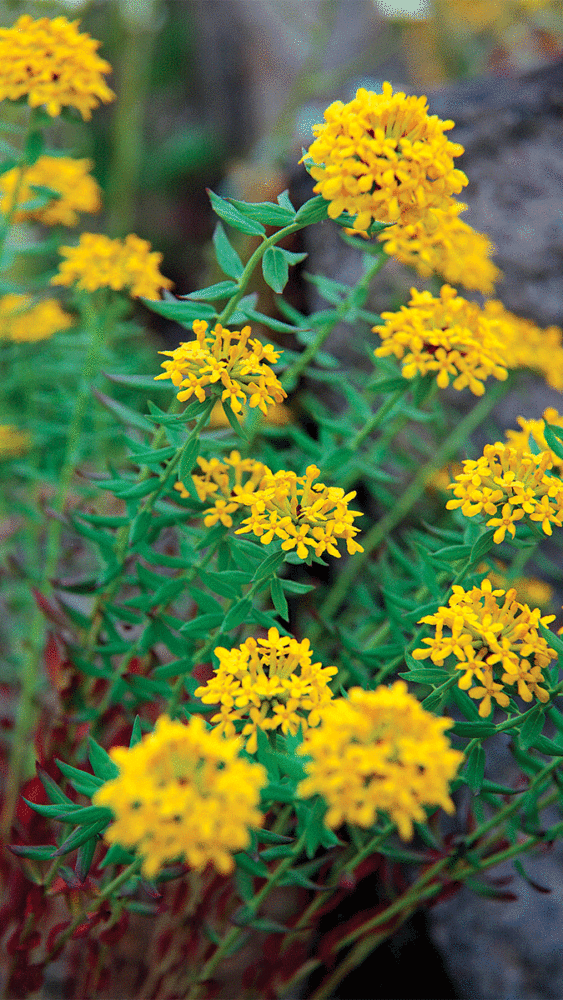
Name: Himalayan stellera (Stellera chamaejasme)
Zones: 4–8
Size: 15 to 18 inches tall and wide
Conditions: Full sun; well-drained soil
Native range: Northern China and Tibet
This is a bona fide, completely irrational, lust plant. I know I can’t grow it in my Kentucky garden; it’s too hot here in the summer, there’s not nearly enough snow cover in winter, and there’s not an ounce of scree within miles. But lust is a fickle
and tyrannical beast. Most members of the genus Daphne and its family Thymeleaceae are woody shrubs that are sublimely beautiful and excruciatingly frustrating to grow. The kiss of death is noticing how good your daphne is looking, at which point you can be sure it will be half-dead inside of three days. But the delicate form and fragrance of daphnes—there’s not much that can compare. However, the fact that daphnes are almost impossible to grow makes them all that much more alluring.
Now move that description to a high Tibetan alpine valley, make the plant not woody but herbaceous, and you arrive at a horticultural nirvana that Kurt Cobain never could have imagined. Himalayan stellera has delicate upright stems and late spring to early summer blooms. The flowers can range from a rich pink to an absolutely divine yellow, and then there’s the fragrance. I have only seen this plant twice in person, and only once in bloom. The sample size wasn’t overwhelming, but if one observation counts for anything, this thing should be bottled and sold for half its weight in gold. It’s really that good.

The Expert: Paul Cappiello is executive director of Yew Dell Botanical Gardens in Crestwood, Kentucky.
From Fine Gardening #193
Fine Gardening Recommended Products

A.M. Leonard Deluxe Soil Knife & Leather Sheath Combo
Fine Gardening receives a commission for items purchased through links on this site, including Amazon Associates and other affiliate advertising programs.


















Comments
Log in or create an account to post a comment.
Sign up Log in